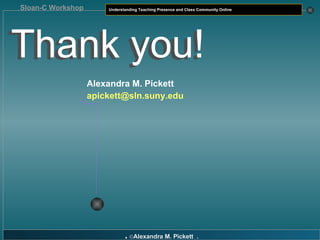
“We look forward to partnering with PresenceLearning in growing its business, while also maximizing its impact on the high need populations the company serves and to supporting PresenceLearning’s inclusive culture, which prioritizes diversity of voice across its employees, providers, and students.”įor more information, visit PresenceLearning’s website. “We have seen across our portfolio the vital role that technology can play in the expansion of equity and access in education,” Rogers said. The new partnership and planned growth in capabilities will meet special education needs caused by shortages of clinicians in the field that became more obvious and urgent during the pandemic, explained John Rogers, partner and education sector lead at The Rise Fund. Steve LeSieur, managing director at Spectrum Equity, said his firm sees “an enormous opportunity for PresenceLearning to revolutionize the way special education and mental health teams deliver high quality instruction and care across our education system and increase access for students.” “We are focused on doing everything we can to support special education teams and ensure that every child has access to a qualified therapist.” “Spectrum and The Rise Fund bring a wealth of expertise in building industry-leading technology platforms and are the ideal partners as we provide a new level of innovation to technology solutions for special education,” Eberle Walker said. Kate Eberle Walker will continue as CEO of the combined company, according to the news release. The new investors enable PresenceLearning to invest heavily in its next phase of growth, the company said. PresenceLearning targets its teletherapy solutions to meet the needs specific to students with learning differences such as in special education programs. “Students with learning differences and mental health needs have been among the most impacted by the pandemic, and there is ever-increasing pressure placed on the hard-working special education and mental health teams serving in schools,” the company said. Implications for practice and recommendations for further research are discussed through the study's proposed modifications on the cognitive presence categories, indicators, and the survey instrument for the K-12 setting where teacher-directed pedagogies or collaborative inquiry processes have not been thoroughly co-opted.Teletherapy continues to emerge as an urgent solution for students needing more access to high-quality therapy and mental health services, and as clinicians demand more remote work alternatives to improve the impact and the sustainability of their work, the release noted.

The analysis affirmed "regulating learning" as the intersection of cognitive presence and teaching presence. Through constant comparison analysis and descriptive statistics, evidence revealed cognitive presence across its categories in the form of connectedness, collaborative work, trust and reciprocation, and shared views on technology by K-12 teachers and learners. This study was driven by the following research questions: How is cognitive presence manifested in the blended learning interactions? In what ways do the interactions of cognitive presence with the other presences characterize learning community building? Three blended learning classes were examined based on data collected through surveys, student focus group discussions, teacher interviews, class observations and archived data. There are research gaps to leverage support for blended learning and flexible learning options to benefit Filipino youth and school-leavers under the Alternative Delivery Mode of the Philippine K-12 system. The company offers access to a network of licensed speech-language pathologists, occupational therapists and behavioral and mental health professionals who work. Through an exploratory case study, this research sought to determine the applicability of the Community of Inquiry in the K-12 setting.


 0 kommentar(er)
0 kommentar(er)
